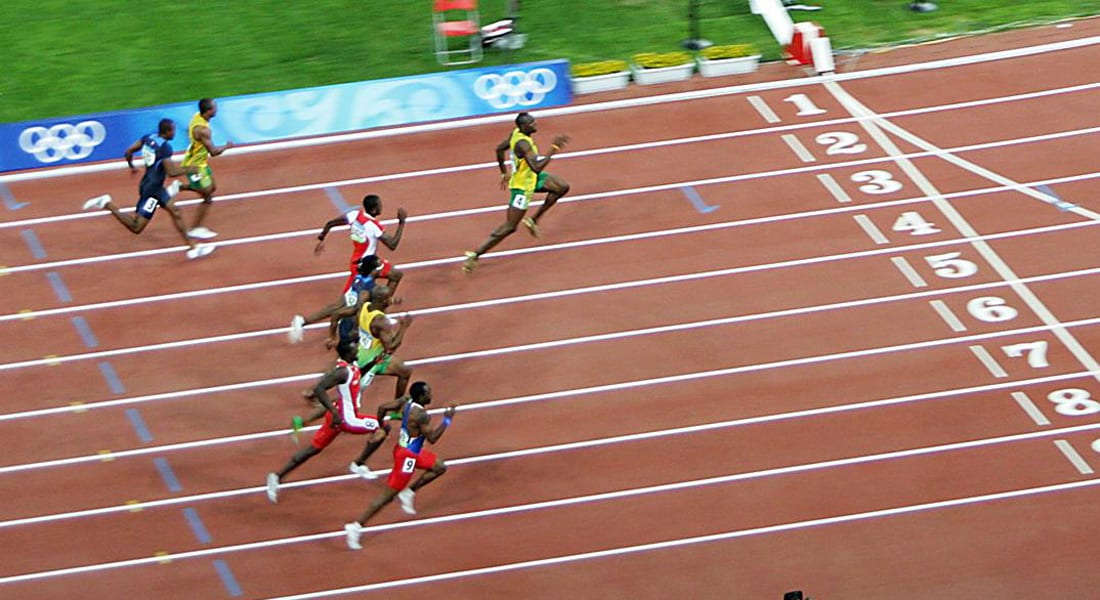“People recognize the power of science, in terms of testing and numbers. But unless you’re involved in it it’s hard to appreciate the creativity that is also part of the process.” — Peter Weyand
The founder of modern sports performance training, Vern Gambetta, interviewed SMU locomotion researcher Peter Weyand about human speed and performance for his GAINcast show.
The GAINcast name is an acronym for the internationally recognized Gambetta’s self-made sports performance education, outreach and training efforts, Gambetta Athletic Improvement Network.
Gambetta’s 60-minute interview with Weyand posted Nov. 2, 2017, “Gaincast Episode 89: How Speed Happens (with Peter Weyand).”
In it, Weyand touches on the experiences early in his career as a high school and college athlete playing basketball and running track that sparked his pursuit of a research and academic career in sports science and human performance.
As a high school coach, Weyand’s early interest intensified, leading him to pursue advanced degrees and a scientific career exploring the mechanics of human locomotion and speed, including at the University of Georgia and then at Harvard’s Concord Field Station.
During that time, Weyand worked with early pioneers in the biomechanics and human performance field, including renowned researcher Dick Taylor. At the field station in particular, Weyand credits Taylor with mentoring young researchers in aggressively and fearlessly digging into basic science questions surrounding mammalian locomotion.
“It was wide open, anything goes. It wasn’t these reductionist questions …. It was anything under the sun you could cook up. And there was an insistence on good scientific questions, and a real integrative perspective on all of it. Those were my formative scientific experiences. People recognize the power of science, in terms of testing and numbers. But unless you’re involved in it it’s hard to appreciate the creativity that is also part of the process. There’s an art of doing science and Dick was a master of that. And everybody that came through that field station under his training, which is really a who’s who in our field in many respects, learned that art from him.”
Weyand is an expert on human locomotion and the mechanics of running. Research from his SMU Locomotor Performance Laboratory in SMU’s Annette Caldwell Simmons School of Education and Human Development has produced ground-breaking scientific findings about the science of human speed.
The lab focuses on the mechanical basis of human performance and includes physicist and engineer Laurence Ryan, an expert in force and motion analysis.
The Weyand lab’s most recent research found that the world’s fastest sprinter, Usain Bolt, has an asymmetrical running gait, contrary to the common notions about coaching and training for speed. Bolt’s asymmetry was discovered using the lab’s two-mass model tool, which the researchers have described in the Journal of Experimental Biology, “A general relationship links gait mechanics and running ground reaction forces.” The model can assess the crucial early portion of foot-ground contact — the impact-phase force and time relationships — from motion data only.
Weyand is Glenn Simmons Professor of Applied Physiology and professor of biomechanics in the Department of Applied Physiology & Wellness.
EXCERPT:
By Martin Bingisser
GAINcastThere are some basic questions out there that are difficult to answer, such as what limits human running speed. As technology advances, scientists can better study and start to answer this and other simple questions like what makes one athlete faster than another.
Dr. Peter Weyand has spent decades researching locomotion on both animals and humans. His work with elite sprinters has brought some interesting conclusions and is driving the field forward. On this episode of the GAINcast he joins us to discuss his research and its practical implications.




